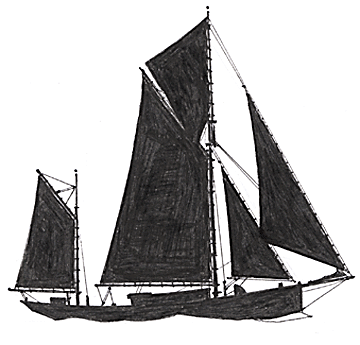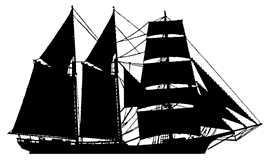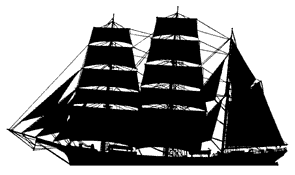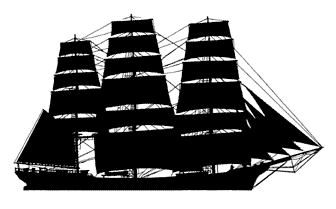|
Coastal Schooner,
the work horse of our coastal trade. She is probably not
much more than a hundred tons, and carries everything from timber and coal
to bricks, general cargo, and a load of hay to offshore island
communities. Our schooner is shown with only a main topmast, but many also
carry a fore topmast. Note the yawl boat towing astern. |

|
Ketch
A two masted sailing vessel where the mizzen mast is ahead
of the rudder. The rig is similar to a schooner but the main mast (the
tallest mast) is the first mast, not the second mast. Ketches are common
in Europe but rare in Nova Scotia. |

|
|
Four Masted Schooner
shown at anchor. This design attempts to reduce individual
sail area, raise tonnage, and still manage with a small crew. She could
operate with eight hands, and reached 500 to 700 tons. |

|
Tern Schooner
a three master built in great numbers all along our shores.
These vessels are cargo carriers of between 200 and 400 tons, requiring a
crew of six to eight. Our Tern is shown with all sails set except
staysails between the masts. |

|










 .
.


